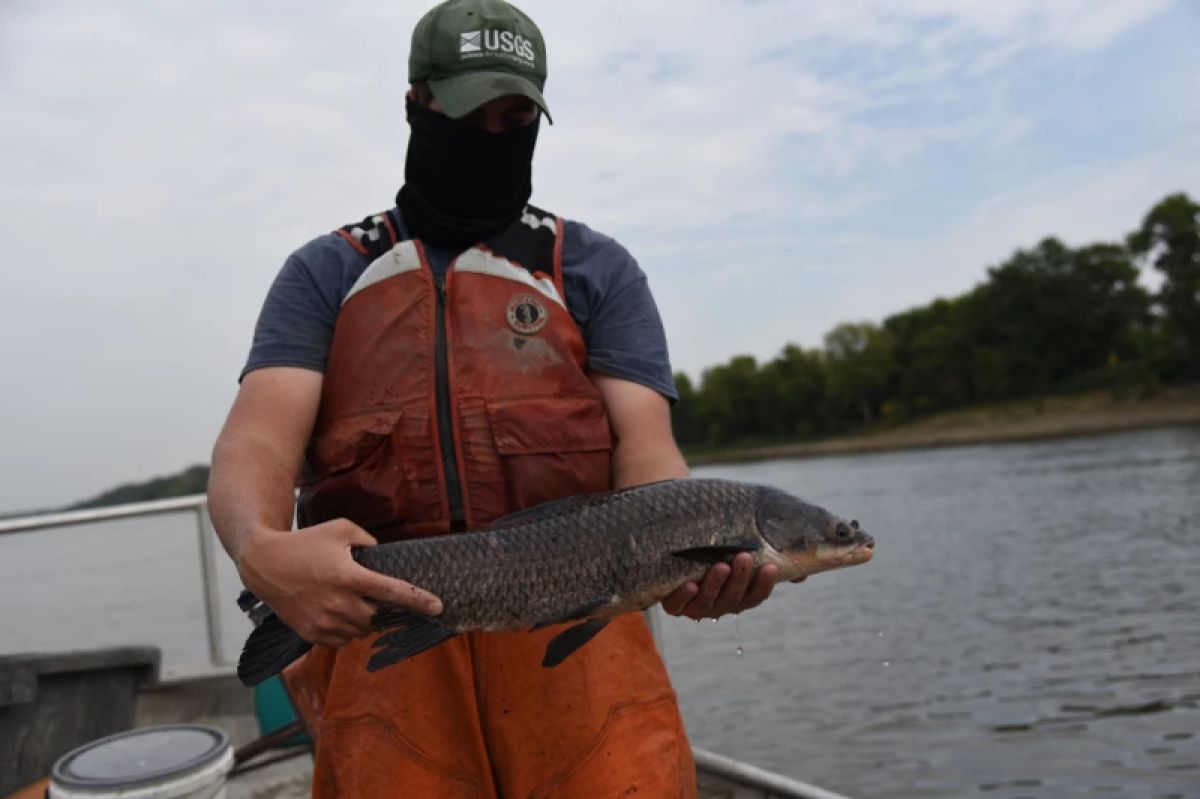
A black carp collected by USGS scientists from the Mississippi River. Credit: U.S. Geological Survey (U.S. Geological Survey)
The black carp, one of four invasive species of carp in North America, has made it into the Mississippi River basin.
A new multi-year report from the U.S. Geological Survey (USGS) found the range of black carp in the Mississippi River basin now includes the entirety of the Mississippi River between New Orleans and the southeastern edge of Iowa, near Keokuk.
The black carp is a large species of fish endemic to parts of east Asia, typically growing over three feet long and weighing over 100 pounds. The fish was deliberately brought to the states during the 1970s as a means of pest control for aquatic snails in fish ponds. The population quickly grew out of control.
The research was done by analyzing the “ear stones,” or “otoliths” – of over 200 black carp from 2011 to 2018 to differentiate whether they were wild or farmed.
Patrick Kroboth is a fish biologist with USGS’s Columbia Environmental Research Center in Columbia, Missouri and one of the authors of the study, published in Biological Invasions. He said that the carp’s ear stones, among other methods, figured prominently in their findings.
“As a fish grows," Kroboth explained, "that calcified structure deposits some of the micro-chemistry of the water around that fish — the environment that it lives in, it's captured there.”
While the presence of the black carp in part of the Mississippi River basin has been previously reported, the research concludes that the population is now self-sustaining.
The black carp is a molluscivore, meaning that it mainly consumes snails, clams, and mussels, among other mollusks. Kroboth said this poses risks for the Mississippi River and its tributaries.
“Many of North America's mussel species are threatened and endangered," he said. "That's obviously a concern."
Back in 2003, the first non-captive black carp was identified in a southern Illinois oxbow lake adjacent to the Mississippi River. Earlier still, commercial fishers in Louisiana had reported catching the fish throughout the 1990s in the Red and Atchafalaya rivers.
Brad Parsons, with the Mississippi Interstate Cooperative Resource Association, said biologists have long suspected the that the black carp lived in the basin, and now the priority should be figuring out how to manage the pest.
“The fact is — fish don't understand political boundaries, and they are not bound by them,” said Parsons. “A fish that is in the Mississippi River one day, could be in the Ohio River the next.”
Beyond the main stem of the Mississippi River, the black carp’s range also includes the majority of its tributaries: the Cumberland, Illinois, Kaskaskia, Missouri, Ohio, Tennessee, Wabash and White rivers.
Parsons said that the management of invasive species in the Mississippi River is going to require a collaborative and multifaceted approach to effectively curb the existential threat that the carp pose.
“Our native species are incredibly resilient. They've been here for a long time," said Parson. "But they are facing a full-frontal assault. And, you know, we don't need any more, new challenges to be thrown into the mix here.”
This story was produced by the Mississippi River Basin Ag & Water Desk, an editorially independent reporting network based at the University of Missouri School of Journalism in partnership with Report For America and the Society of Environmental Journalists, funded by the Walton Family Foundation.
It's being distributed in partnership with Harvest Public Media, a collaboration of public media newsrooms in the Midwest, which reports on food systems, agriculture and rural issues. Follow Harvest on Twitter: @HarvestPM













